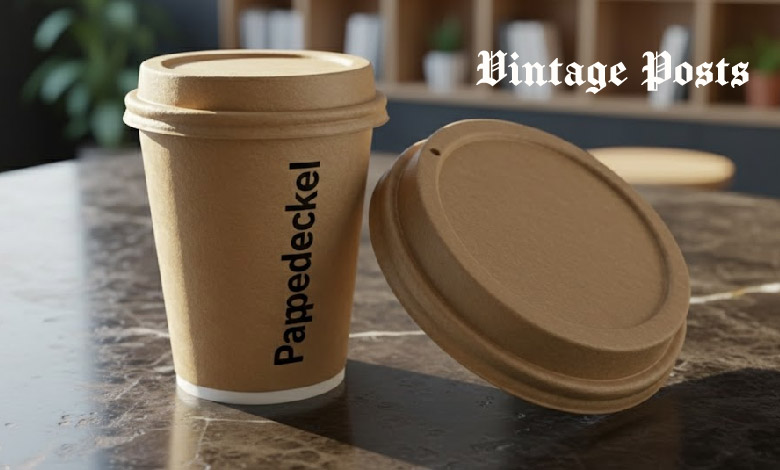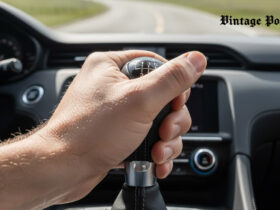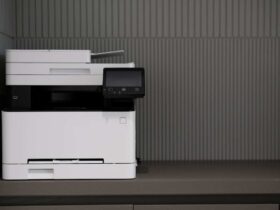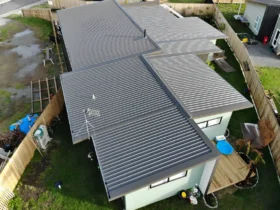In the world of sustainable packaging, every little change counts. One innovation that has made waves in recent years is the Pappedeckel—a small, eco-friendly cardboard lid with a significant impact on the environment. Designed as a sustainable alternative to plastic lids, Pappedeckel is revolutionizing industries ranging from food packaging to creative DIY projects. In this article, we’ll dive deep into what Pappedeckel is, its environmental benefits, common uses, and why it’s becoming the go-to choice for businesses looking to reduce their carbon footprint.
What is Pappedeckel?
Pappedeckel is a small, lightweight cardboard lid used primarily for sealing containers, especially in food packaging. While it may seem simple at first glance, its design offers an array of benefits that make it both practical and eco-friendly. Available in various sizes and shapes, Pappedeckel can be used for everything from takeout containers to artisanal food packaging.
This small lid does more than just seal containers—it plays a crucial role in maintaining product freshness, protecting contents from contaminants, and reducing environmental impact. As sustainability becomes more of a priority for both businesses and consumers, the Pappedeckel stands out as a product that offers a viable, environmentally responsible solution.
The History and Origin of Pappedeckel
The concept of the Pappedeckel originated in Germany during the late 20th century. As environmental concerns grew, the need for sustainable packaging solutions became more pressing. Plastic lids, although effective in sealing products, have long been a burden on the environment due to their non-biodegradable nature.
In response to these environmental challenges, Pappedeckel was introduced as a viable alternative made from recyclable, biodegradable cardboard. The success of this innovation coincided with growing consumer demand for sustainable products, making Pappedeckel a go-to choice for businesses looking to align their practices with eco-conscious values.
Materials Used in Manufacturing Pappedeckel
The key to the sustainability of Pappedeckel lies in its material composition. Primarily made from high-quality cardboard, these lids offer durability while remaining lightweight. The cardboard can be sourced from recycled fibers, further enhancing its eco-friendliness.
Additionally, biodegradable coatings and inks are often used to make the Pappedeckel safe for food applications, ensuring that no harmful chemicals leach into the product. This combination of sustainability and robustness makes Pappedeckel a superior choice for those committed to reducing their environmental impact without sacrificing quality.
Benefits of Using Pappedeckel
- Eco-Friendly: Made from recyclable cardboard and biodegradable coatings, Pappedeckel is a green alternative to plastic lids, helping businesses and consumers reduce waste.
- Durability and Freshness: These lids provide an airtight seal that helps keep food fresh, offering the same functionality as plastic lids without the environmental cost.
- Cost-Effective: Because they are lightweight and easy to manufacture, Pappedeckel helps reduce shipping costs and is often more affordable than plastic counterparts.
- Versatility: Pappedeckel can be customized to fit a variety of containers, from small jars to large takeout cups, making it suitable for a wide range of industries.
Common Uses of Pappedeckel
1. Food and Beverage Industry
One of the most popular uses of Pappedeckel is in the food and beverage sector. These cardboard lids are perfect for sealing cups, jars, and containers, keeping the contents fresh and safe from contamination. Commonly used for packaging takeout meals, sauces, snacks, and beverages, Pappedeckel helps businesses offer eco-friendly alternatives to plastic packaging.
2. Crafts and DIY Projects
Aside from their practical uses in food packaging, Pappedeckel lids have also become a popular choice in the crafting world. Their simple design provides an excellent base for artists and crafters to create decorative items, such as customized coasters, place cards for weddings, or even mixed-media artwork. The versatility of Pappedeckel makes it an ideal material for creative expression, especially for those looking to incorporate sustainable materials into their projects.
3. Commercial and Retail Use
Pappedeckel can also be customized with branding, logos, or unique designs, making it a valuable marketing tool for businesses. Whether it’s a coffee shop using Pappedeckel for their signature drinks or a restaurant offering sustainable packaging, these lids offer an eco-friendly way to boost a brand’s visibility while keeping the environmental impact low.
Pappedeckel vs Plastic Lids: Which Is Better?
Plastic lids have long been the standard in the packaging industry, but their environmental cost is becoming increasingly evident. Unlike Pappedeckel, which is biodegradable and recyclable, plastic lids take hundreds of years to break down in landfills, contributing to pollution and waste.
While plastic lids offer durability and water resistance, Pappedeckel is rapidly catching up with innovations in biodegradable coatings, making it just as effective for sealing food items while being eco-friendly. For businesses looking to reduce their carbon footprint and appeal to sustainability-conscious consumers, Pappedeckel is the superior choice.
Key Differences Between Pappedeckel and Plastic Lids:
| Feature | Pappedeckel | Plastic Lids |
|---|---|---|
| Material | Cardboard (recyclable, biodegradable) | Petroleum-based plastic |
| Environmental Impact | Low impact, biodegradable | High impact, non-biodegradable |
| Durability | Strong, but not as resistant to water as plastic | Highly durable, water-resistant |
| Cost | Often cheaper due to lower material costs | Can be more expensive due to production costs |
| Customization | Easily customizable with printing or designs | Customizable, but more expensive |
Environmental Impact of Pappedeckel
The environmental benefits of Pappedeckel are undeniable. Unlike plastic, which persists in the environment for centuries, Pappedeckel breaks down naturally over time. This feature is crucial in the fight against global plastic pollution, especially when it comes to food packaging, which is one of the largest contributors to plastic waste.
Furthermore, Pappedeckel’s recyclability ensures that the product can be repurposed at the end of its life cycle. The use of renewable resources, such as recycled fibers, helps reduce the demand for virgin materials, conserving natural resources and decreasing energy consumption in the manufacturing process.
Statistics on Waste Reduction:
- Businesses that have switched to Pappedeckel report a 30-40% reduction in packaging waste.
- By choosing recyclable and biodegradable options like Pappedeckel, businesses can lower their carbon footprint by up to 20% annually.
- In 2023, the global market for sustainable packaging, including cardboard products like Pappedeckel, was valued at over $200 billion, highlighting the growing shift towards green alternatives.
Recycling and Sustainability of Pappedeckel
Pappedeckel is designed with a circular economy in mind. The cardboard used in manufacturing these lids is recyclable, and the biodegradable coatings ensure that they won’t persist in landfills. After use, they can be recycled just like any other cardboard product, reducing the amount of waste that ends up in landfills and contributing to a more sustainable future.
The production process of Pappedeckel also focuses on sustainability. Many manufacturers use FSC-certified (Forest Stewardship Council) cardboard, ensuring that the materials come from responsibly managed forests. Additionally, the adhesives and coatings used in manufacturing are eco-friendly, further reducing the environmental impact.
The Future of Pappedeckel and Sustainable Packaging
As the demand for sustainable packaging solutions continues to grow, Pappedeckel is poised to play a major role in the packaging industry’s shift away from plastic. By 2030, the global market for sustainable packaging is expected to exceed $500 billion, and Pappedeckel and similar products will lead the way in this transformation.
Innovations in biodegradable coatings and plant-based materials will only increase the versatility of Pappedeckel, making it even more resistant to water and air while maintaining its eco-friendly qualities. The future of packaging is green, and Pappedeckel is at the forefront of this movement.
Conclusion: Why Pappedeckel Matters
Pappedeckel is more than just a cardboard lid; it’s a symbol of innovation in sustainable packaging. By offering a practical, eco-friendly alternative to plastic lids, it is helping businesses and consumers alike reduce their environmental impact. Whether used in food packaging, crafting, or retail, Pappedeckel is a versatile solution that contributes to a healthier planet.
As we continue to prioritize sustainability, products like Pappedeckel will become integral in shaping the future of packaging. By making the switch to eco-friendly alternatives, we can all contribute to a cleaner, greener world.
FAQs:
1. Can Pappedeckel be recycled?
Yes, Pappedeckel is made from recyclable cardboard, which means it can be easily recycled after use.
2. Is Pappedeckel safe for food packaging?
Yes, Pappedeckel is designed with food safety in mind. It often uses biodegradable coatings and inks that meet food safety standards.
3. Where can I buy Pappedeckel?
Pappedeckel is available from eco-friendly packaging suppliers such as BioPak, Vegware, and Huhtamaki.
4. What are the environmental benefits of using Pappedeckel?
Using Pappedeckel reduces plastic waste, conserves natural resources, and helps lower carbon footprints by providing a biodegradable alternative to plastic lids.
For More Update Visit: Vintage Posts














Leave a Reply